Podarcis muralis
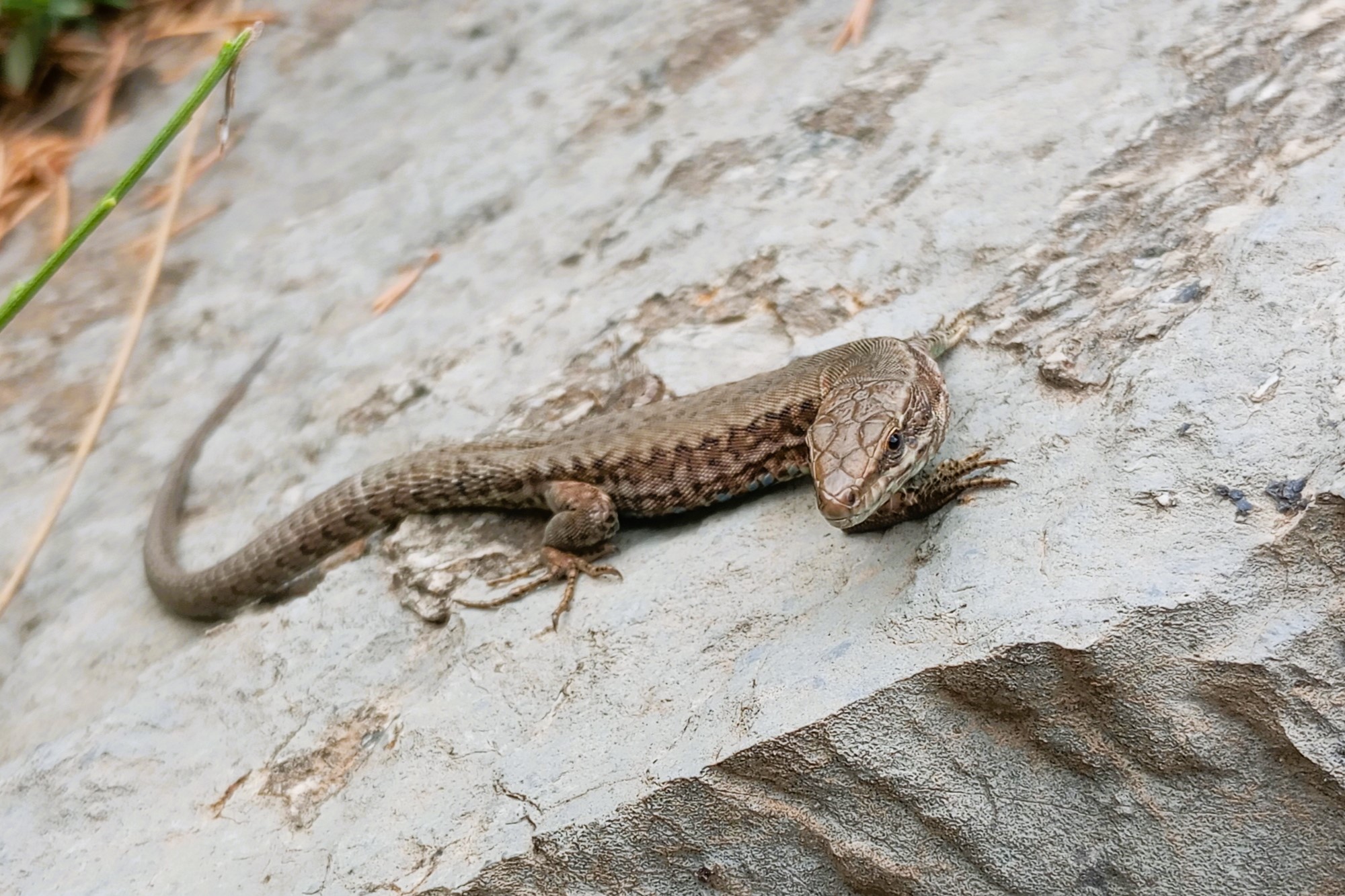

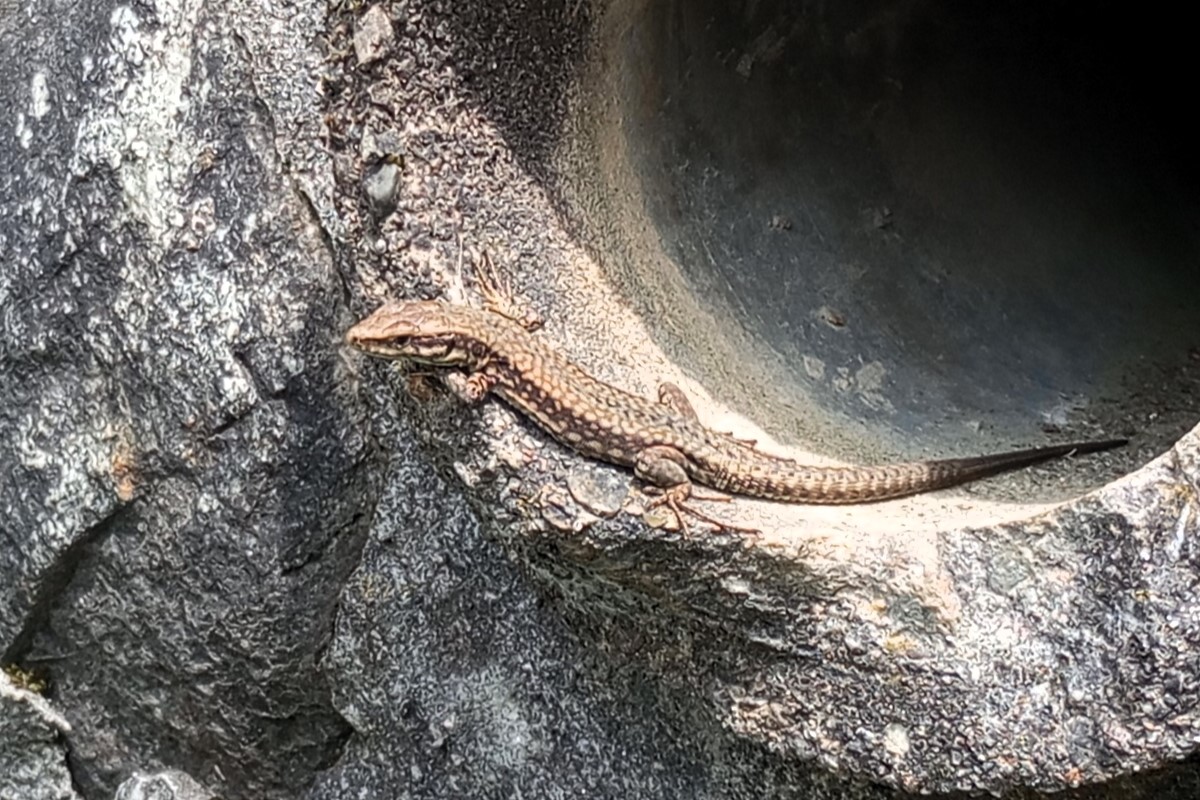
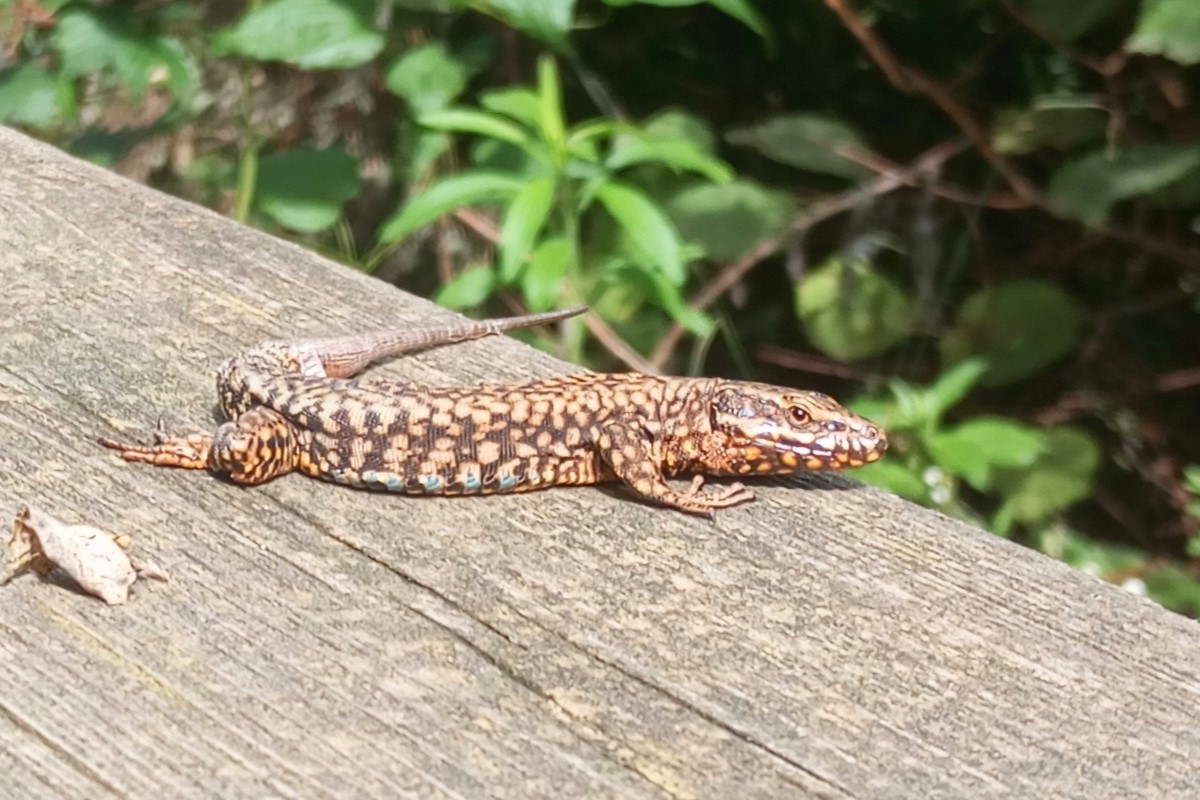
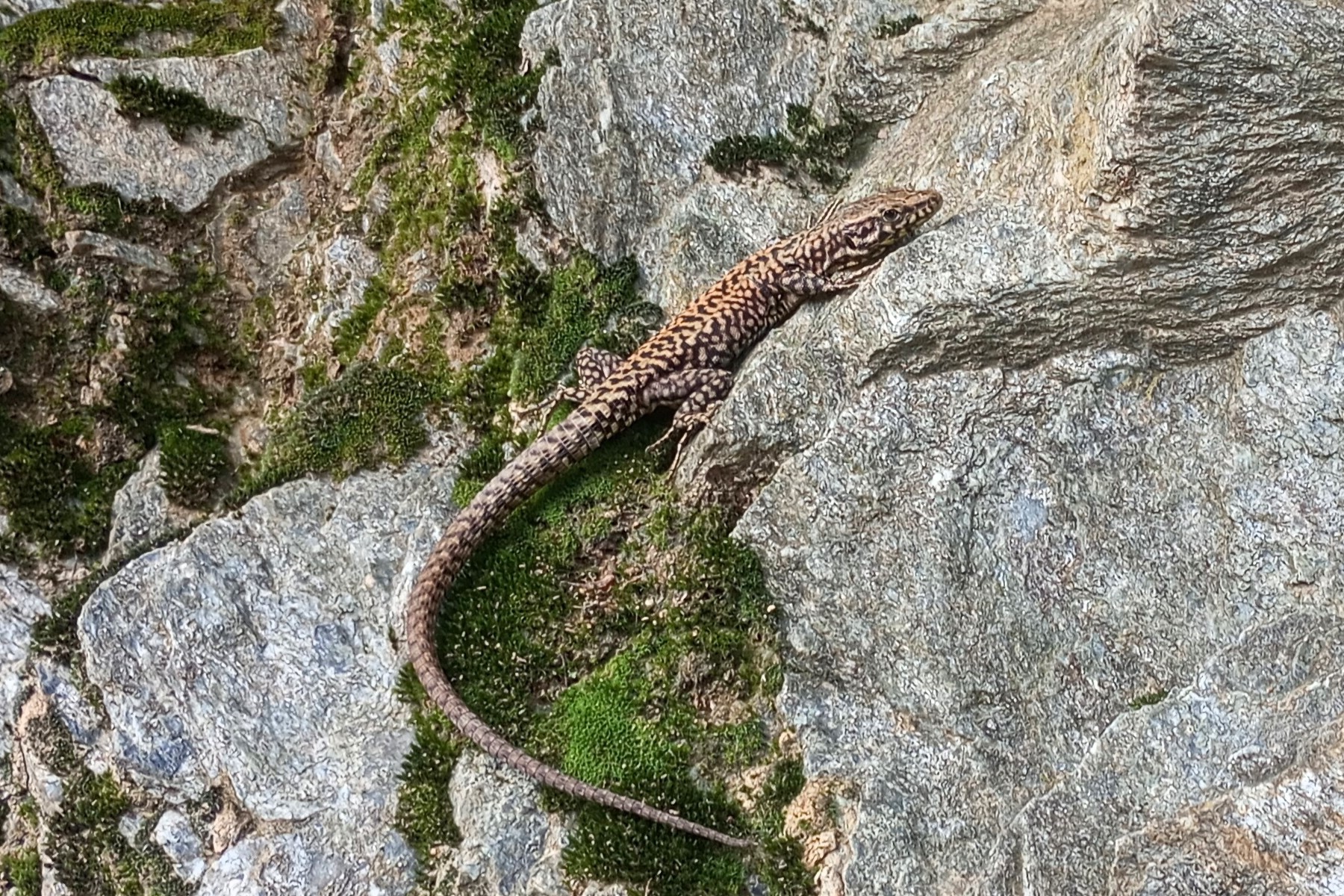
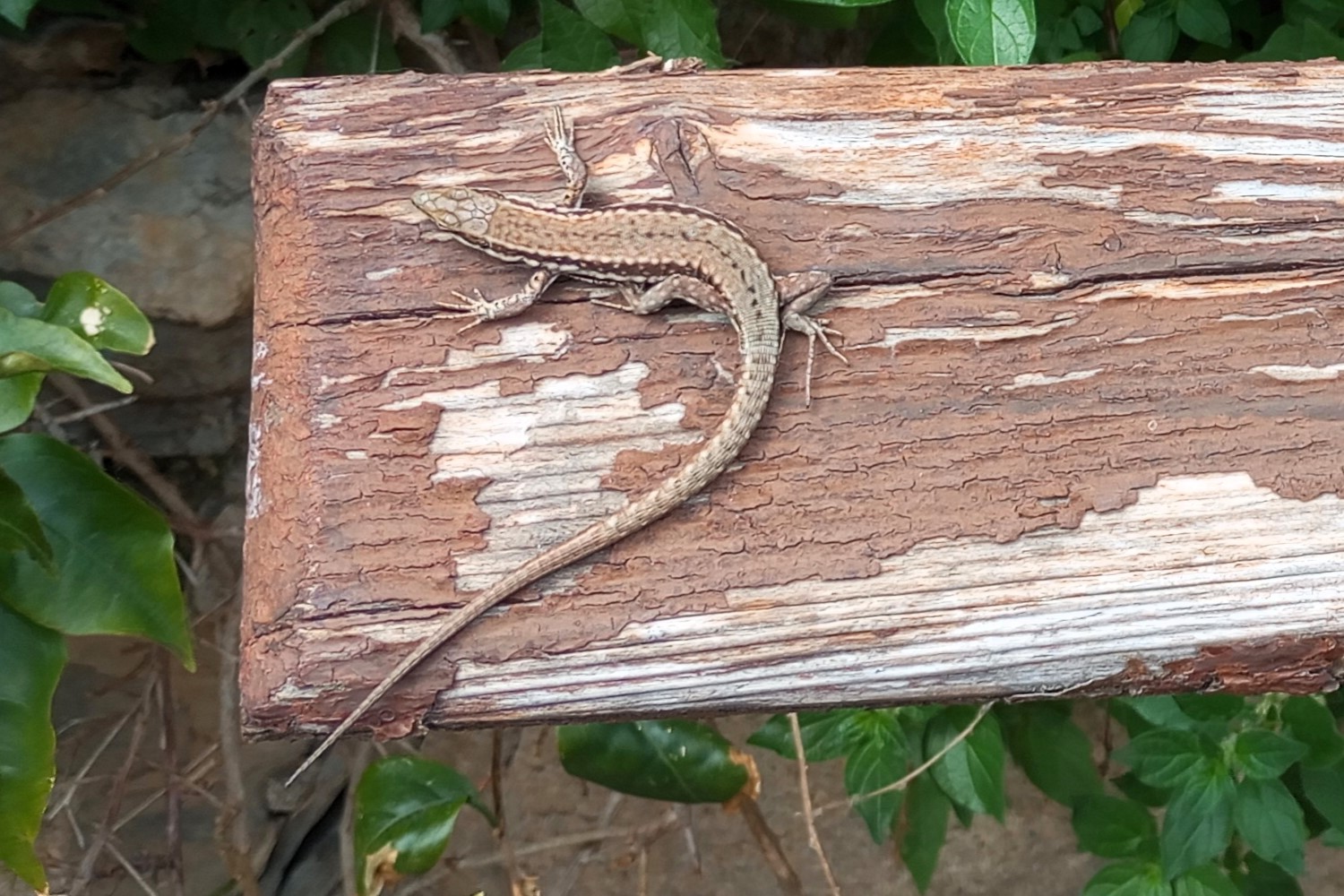
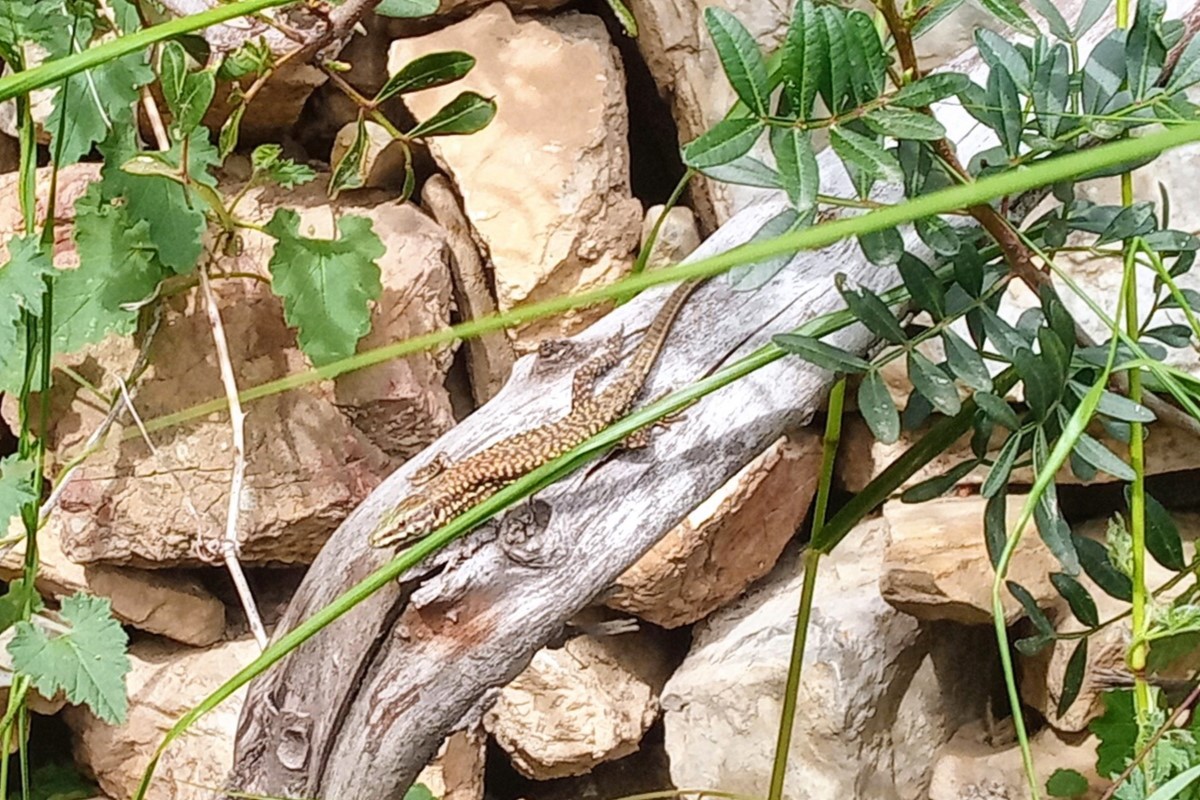
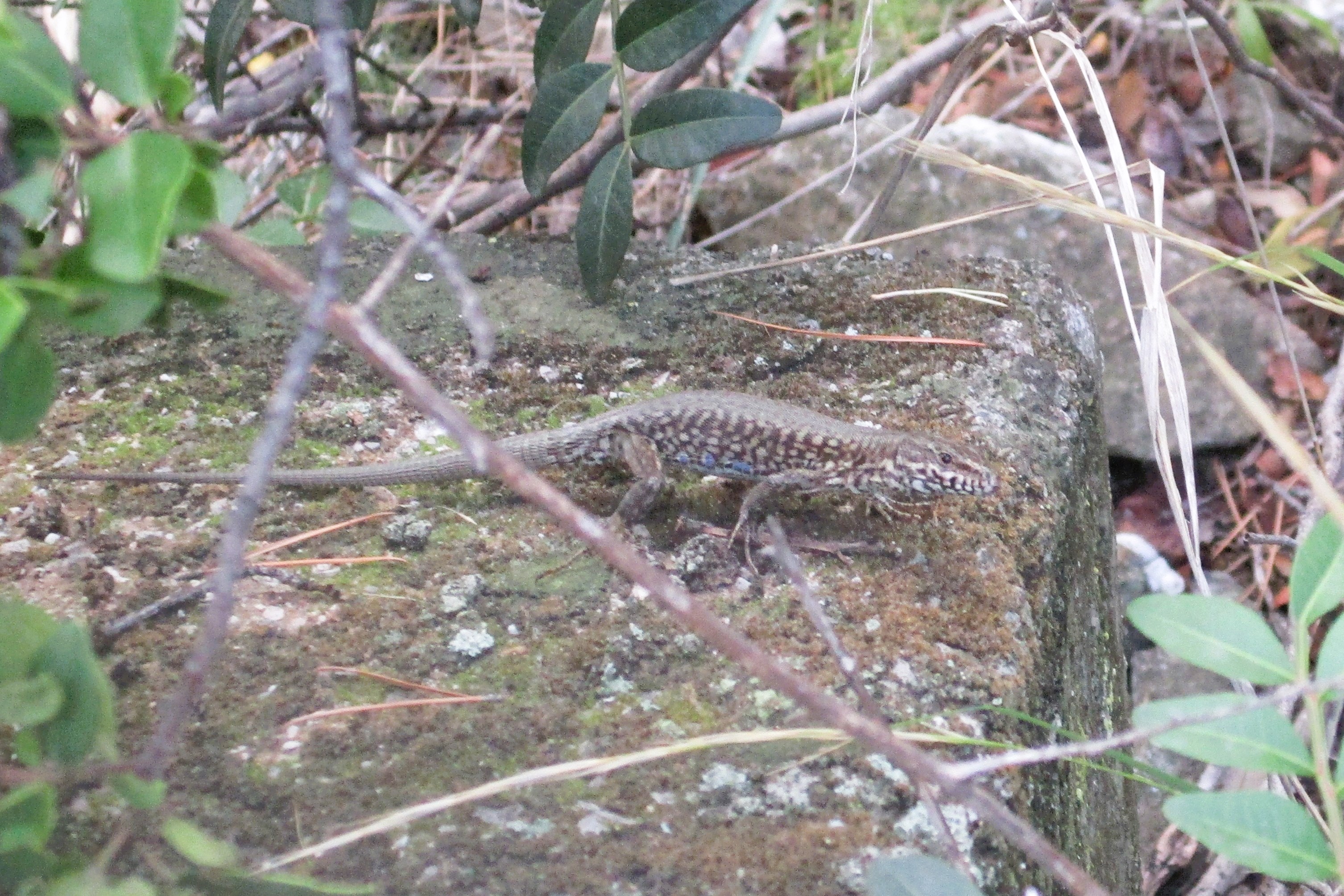
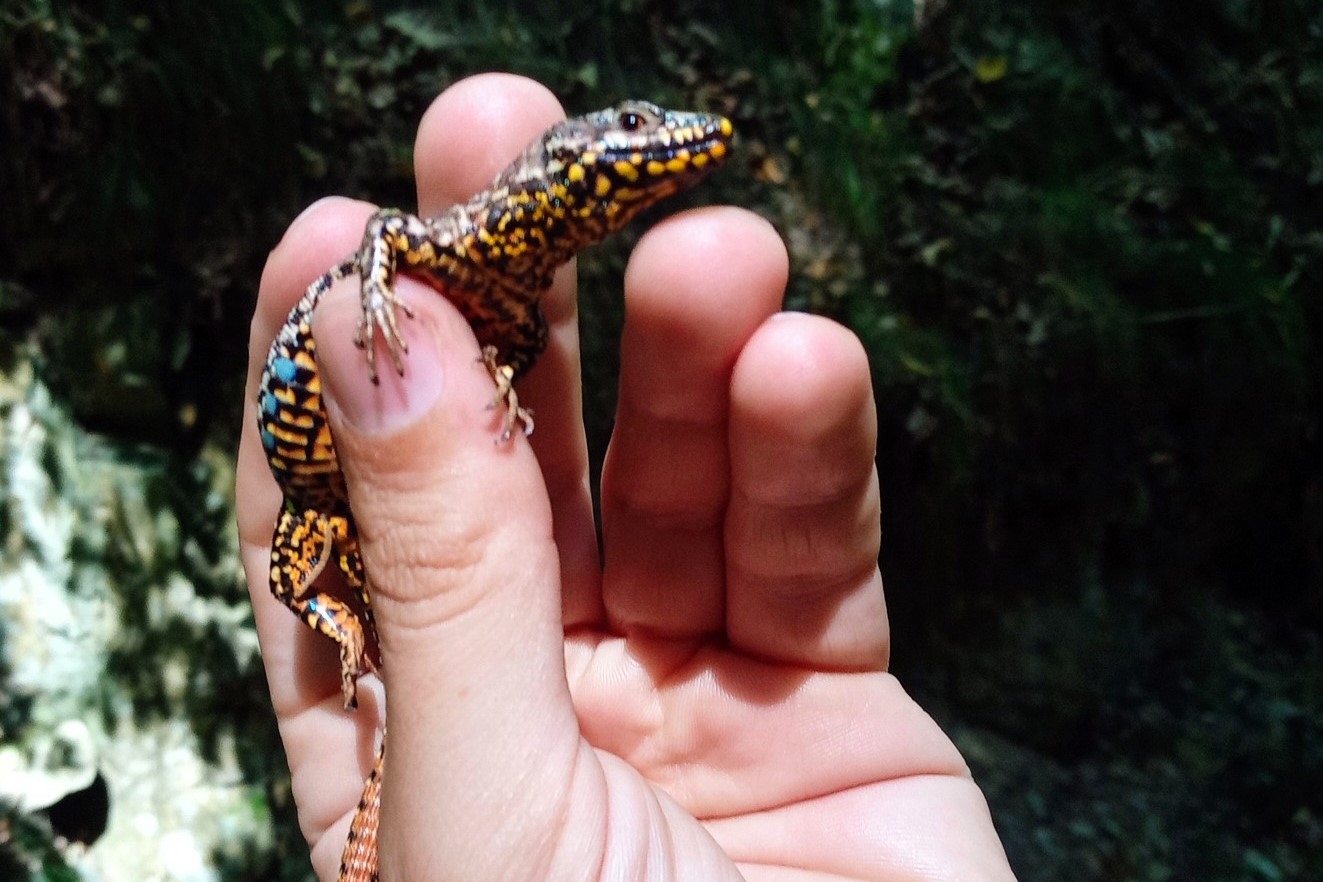
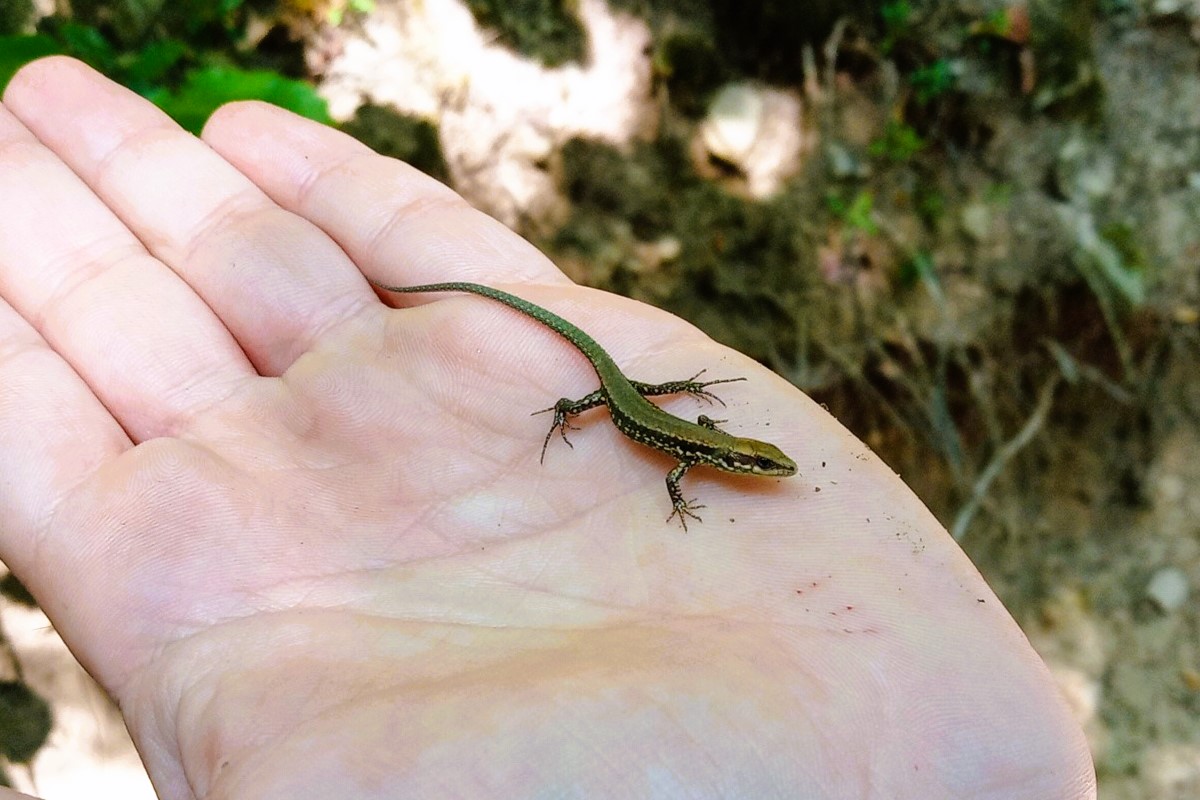
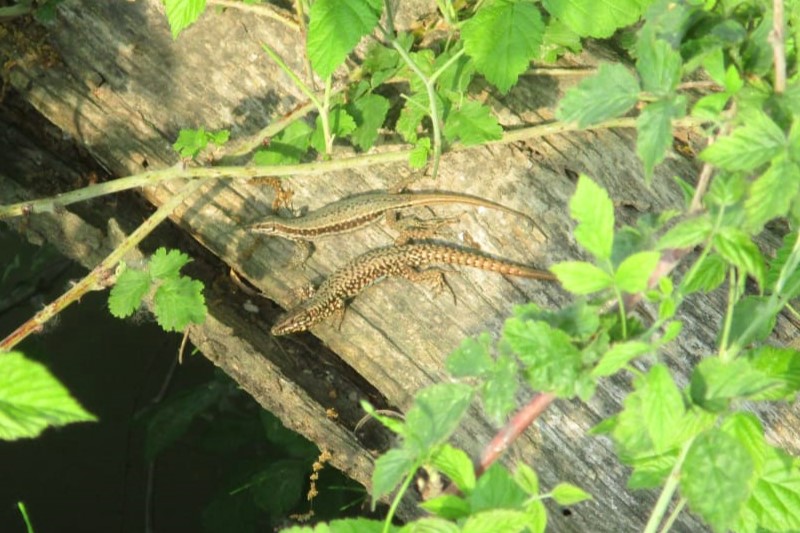
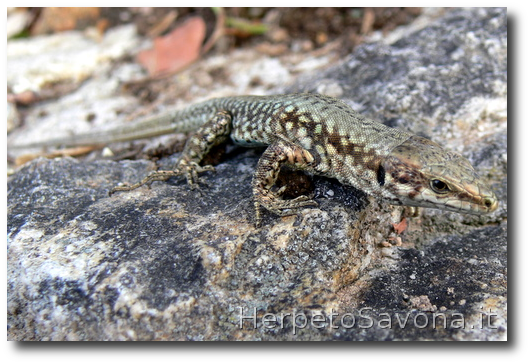
Reptilia → Squamata → Lacertidae → Podarcis → Podarcis muralis
Sgrigua
The Common Wall Lizard ( Podarcis muralis ) is characterized by a relatively slender and flattened build, a perfect adaptation for moving agilely among crevices and vertical surfaces.
Adults normally reach 6 in (15 cm), while the largest individuals can exceed 8 in (20 cm), including the long tail, which often becomes twice the length of the body.
The back is highly variable: colors range from gray to brown, sometimes adorned with green shades, and a variety of dark stripes and reticulations that make each individual distinctive.
In males, the head becomes proportionally larger and the color more vivid, sometimes with reddish or orange tones, especially during the breeding season.
The belly is almost always whitish or yellowish with scattered dark spots, helping to camouflage the lizard in the mosaic of light and shadow in its environment.
In the warm months, they are very active; in spring, males can often be heard vying—through postures and movements—for the best territories and females.
This species is one of the most widespread saurians in western Liguria and the province of Savona, present from sea level up to approximately 4,600 ft (1 400 m), such as on the slopes of Monte Beigua.
It also colonizes the Gallinara and Bergeggi islands.
Within its range, the Common Wall Lizard shows great ecological flexibility, adapting even to urbanized and human-influenced contexts.
The Common Wall Lizard prefers stony and sunny environments: dry stone walls, rocks, scree, forest edges, and roadsides, but it is not uncommon to find it in meadows, on the walls of farm buildings, or even in urban centers.
Habitat choice seems to depend on the presence of safe refuges and surfaces suitable for thermoregulation, often alternating with clearings where the lizard can bask in the sun during peak activity.
This lizard is typically diurnal and displays notable adaptability in its annual cycles: winter dormancy generally extends from November to March, but in warmer or sheltered areas it is not uncommon to see active individuals even during the winter.
After hibernation, the breeding season begins, continuing through much of spring and into early summer.
Females lay from 1 to 3 clutches per year, with 5–10 eggs per clutch, which hatch after about 2–3 months.
The young are independent from birth and reach sexual maturity after about two years.
During sunny days, the species is tireless in its thermoregulation, carefully choosing warm perches from which it can quickly disappear if needed.
Essentially insectivorous, the Common Wall Lizard's diet consists of a wide array of small invertebrates: insects, arachnids, and other arthropods, which it catches with quick forays among the vegetation or along warm stones of walls.
Numerous predators threaten the Common Wall Lizard, including snakes ( Hierophis viridiflavus , Coronella austriaca , Natrix helvetica , Malpolon monspessulanus ), birds, and small to medium-sized mammals such as the Hedgehog (Erinaceus europaeus) and the Weasel (Mustela nivalis).
Despite its agility and speed, the species’ survival can be affected by habitat fragmentation caused by urbanization and road traffic.
Like many lizards, the Common Wall Lizard has the extraordinary ability of caudal autotomy: in dangerous situations, it can voluntarily shed the tip of its tail, thus distracting the predator and gaining precious time to escape.
The tail regenerates over several months, although it is usually shorter and differently colored than the original.